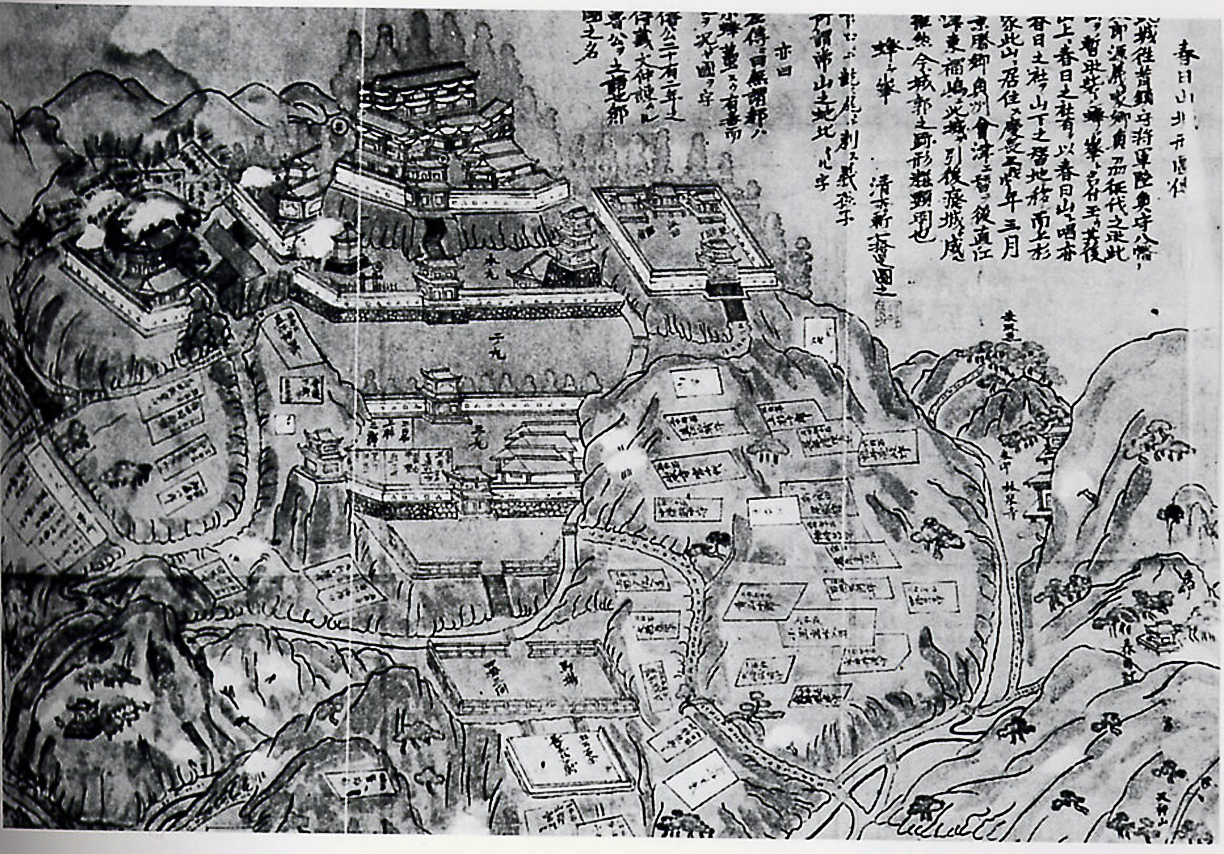Nagao Kageharu on:
[Wikipedia]
[Google]
[Amazon]
was a Japanese
"Nagao," ''Nobiliare du Japon'', p. 39
retrieved 2013-5-5.
 The Nagao clan descend from Taira no Yoshifumi, of the Kammu Heishi (
The Nagao clan descend from Taira no Yoshifumi, of the Kammu Heishi (
samurai
were the hereditary military nobility and officer caste of medieval and early-modern Japan from the late 12th century until their abolition in 1876. They were the well-paid retainers of the '' daimyo'' (the great feudal landholders). They h ...
clan. Papinot, Jacques Edmond Joseph. (1906). ''Dictionnaire d’histoire et de géographie du Japon''; Papinot, (2003)"Nagao," ''Nobiliare du Japon'', p. 39
retrieved 2013-5-5.
History
 The Nagao clan descend from Taira no Yoshifumi, of the Kammu Heishi (
The Nagao clan descend from Taira no Yoshifumi, of the Kammu Heishi (Taira clan
The Taira was one of the four most important clans that dominated Japanese politics during the Heian, Kamakura and Muromachi Periods of Japanese history – the others being the Fujiwara, the Tachibana, and the Minamoto. The clan is divided ...
), and from the Emperor Kammu
, or Kammu, was the 50th emperor of Japan,Imperial Household Agency (''Kunaichō'') 桓武天皇 (50) retrieved 2013-8-22. according to the traditional order of succession. Kanmu reigned from 781 to 806, and it was during his reign that the scop ...
(735–806), the 50th Emperor of Japan.
They are one of the 'Bando Hachi Heishi', the 'eight Taira clans of Kanto region' (the Chiba, Miura, Nagao, Kazusa, Doi, Chichibu, Oba, and Kajiwara clans).
The family name of Nagao began when Kagehiro, settled at Nagao no sho estate, in Sagami Province, and took the name of the place. The Nagao were the Kasai (Head retainers) of the Uesugi clan
The is a Japanese samurai clan which was at its peak one of the most powerful during the Muromachi and Sengoku periods (14th to 17th centuries). Appert, Georges. (1888) ''Ancien Japon,'' p. 79./ref> At its height, the clan had three main branch ...
, and were the Shugodai (vice-Governors) of Echigo, Kozuke, and Musashi provinces.
The Kamakura Ashikaga Nagao branch, was called the Kamakura Nagao because they lived in Kamakura. They were also given the Ashikaga Ashikaga (足利) may refer to:
* Ashikaga clan (足利氏 ''Ashikaga-shi''), a Japanese samurai clan descended from the Minamoto clan; and that formed the basis of the eponymous shogunate
** Ashikaga shogunate (足利幕府 ''Ashikaga bakufu''), a ...
Shoguns family 'Historic estate', the Ashikaga estate in Shimotsuke Province, and were lords of Kanno castle. Nagao Masanaga settled in the Koshigeyama area, and was lord of Tatebayashi castle.
The Shirai Nagao branch were Shugodai (vice-Governors) of Kozuke and Musashi provinces and lords of Aomi, Hachigata and Shirai castles.
The Echigo Nagao branch were Shugodai of Echigo province. The clan built and controlled Kasugayama Castle and the surrounding fief, in what is now Niigata Prefecture. Nagao Kagetora, adopted by Uesugi Norimasa, became lord of Kasugayama castle in 1548, taking the name Uesugi Kenshin and effectively becoming the head of the Uesugi clan.
Nagao family members of note
*Nagao Tamekage (d. 1536), was the father of Nagao Kagetora (Uesugi Kenshin) and Aya-Gozen. *Nagao Harukage (1509-1553), Uesugi Kenshin's older brother, and successor to his father Nagao Tamekage in 1536. *Uesugi Kenshin (1530-1578), originally Nagao Kagetora, is one of the most famous warlords in Japanese history. *Aya-Gozen (1524–1609), half-sister of Uesugi Kenshin and mother of Uesugi Kagekatsu. *Nagao Fujikage (dates unknown) fought under Kenshin at the fourth Battles of Kawanakajima, battle of Kawanakajima in 1561. *Lady Shirai (d. 1565) was a retainer of Ashikaga Yoshiteru.References
Further reading
*Frederic, Louis (2002). "Japan Encyclopedia." Cambridge, Massachusetts: Harvard University Press. *Turnbull, Stephen (1998). 'The Samurai Sourcebook'. London: Cassell & Co. {{DEFAULTSORT:Nagao Clan Japanese clans Taira clan